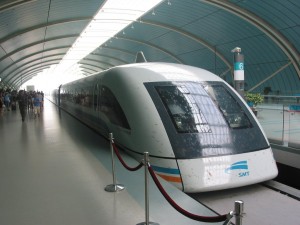Energy Efficiency
Technology has evolved allowing exciting improvements in rail transportation all over the world.
Technology has evolved allowing exciting improvements in rail transportation all over the world.
In response to the growing need to curtail the use of fossil fuels and cut carbon emissions, rail transportation firms around the world are exploring cutting-edge, eco-friendly designs. Governments and other entities, meanwhile, are calling for a quickening of the pace of research into sustainable technologies.
 Among the leaders in this arena is the Berlin, Germany-based Bombardier Transportation, which offers services and products focused on “sustainable mobility.” According to the company, shifting from road to rail transportation would cut carbon emissions by 70% per passenger for every kilometer traveled.
Among the leaders in this arena is the Berlin, Germany-based Bombardier Transportation, which offers services and products focused on “sustainable mobility.” According to the company, shifting from road to rail transportation would cut carbon emissions by 70% per passenger for every kilometer traveled.
Bombardier’s AeroEfficient Optimized Train Shaping technology allows developers to design rail vehicles with less aerodynamic drag. The company says that reducing drag can cut energy use by 15% for high-speed trains.
Also in Europe, Belgian rail operator Infrabel partnered with renewable energy company Enfinity on a solar-power project. Thousands of solar panels were installed on the roof of a 2-mile-long tunnel along a stretch of rail line in Belgium. Energy produced by the solar panels is used to power railway signals and lighting, as well as trains and station heating systems.
In Germany, national rail operator Deutsche Bahn has set a target of operating all of its trains entirely on renewable energy by 2050. In 2012, the company carried 2 billion passengers on its more than 25,000 trains.
In the United States, several major initiatives are on track to boost sustainability in the nation’s rail system, allowing for green travel.
For example, the U.S. High Speed Rail Association is lobbying for a national high-speed rail network powered by renewable energy such as geothermal, solar, wind and tidal. The nonprofit trade group notes that 70% of the 20 billion barrels of oil used daily in the United States fuels transportation.
The association’s mission statement calls for 17,000 miles of high-speed rail lines to be built by 2030.
In May 2013, Amtrak and Seimens unveiled the first of 70 new electric locomotives to be introduced into service in the Northeast by 2016. Among other eco-friendly features, energy produced by the locomotives’ braking system will be captured and returned to the electrical grid.
According to the U.S. Department of Transportation, funding for the new locomotives was financed through the Federal Railroad Administration’s Railroad Rehabilitation and Improvement Financing Program. The project has created jobs in dozens of U.S. cities and some workers received training overseas from rail manufacturers.
These projects in Europe and North America are only a sampling of the sustainable energy initiatives currently under way in national rail systems around the world. As technology continues to advance and fossil fuel supplies diminish, the shift to environmentally friendly, high-speed rail is likely to gather steam.
—
This article was provided by Dean Vella who writes about green supply chain topics and best practices for University Alliance. The certificate programs help to prepare for supply chain management certification.